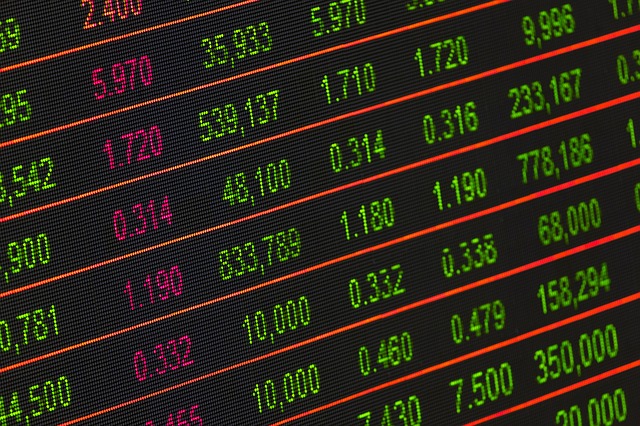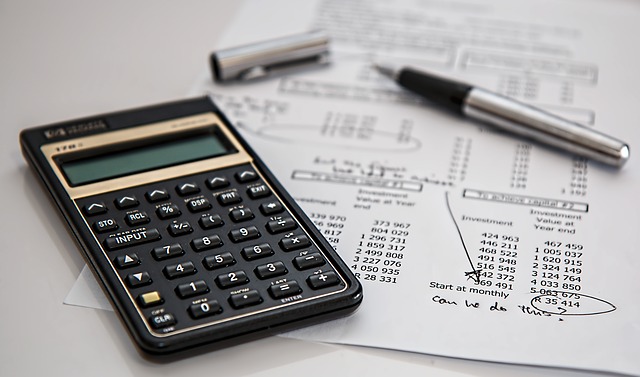Top Blue Chip Stocks, Dividend Stocks and more
View a list of top stocks on NASDAQ and NYSE
Stock Forecasts, Price Charts, Annual Reports and More
Stock Forecasts, Technical Analysis, Price Charts and More
Best Stocks Under $100
More Stock Tools
Hottest Stocks Right Now
What Are Dividend Aristocats? Dividends can play an important role in your investment portfolio. Before you start buying stocks that pay dividends, though, you should learn about the ways investors use dividends. You should also learn about the potential pros and cons that will apply to your investment goals.
In particular, we'll answer the question: what are dividend aristocrats and how can they help you achieve your portfolio goals? But first, let's start with what dividends are and why they are so powerful.
What Is a Dividend (Paid)?
Some companies attract investors by promising to pay quarterly or annual dividends. Companies have several ways of determining how much money they distribute to stock owners. In most cases, you can expect the company’s board of directors to approve an amount for each share of stock.Let’s use a real-world example to show how dividends work. In a recent earnings report, IBM paid $1.62 in dividends per share.
If you owned 50 shares of IBM stock, then you would have gotten paid $81. The company issued similar dividend payments during the previous three quarters. Over a year, then you could expect your 50 shares in IBM stock to earn you a little less than $325.
Depending on the company and your brokerage, you may:
- Receive a check for your dividends.
- Have the option to purchase more shares with your dividends.
- Get paid in other types of assets.
How Do Dividends Work?
Don’t think that you can buy dividend stocks at the last minute to get paid at the end of a quarter. Companies require stockholders to own their shares for a certain amount of time before they can get paid. If you have owned the shares for at least one full quarter, you will probably get paid a dividend.Companies determine their dividend amounts by looking at their profits and setting a yield ratio (more on dividend yields below.) Staying with the IBM example used above, the company’s board set a 5.2% dividend yield, which is quite high for most industries.
Keep in mind that companies can retain some of their profits for developing new products, opening new offices, and other activities. You may not get paid for all of the quarter’s profits.
What Is A Dividend Example?
Now that you know more about the basics of dividend stocks, let’s take a more in-depth look at a dividend example.Last year, you purchased 50 shares of Garmin (GRMN), the American company that makes GPS devices, including popular consumer products that people use to track their health.
Garmin distributes dividends on a quarterly basis. In 2020, they released dividends on December 13, March 13, June 6, and September 14. The first two payments were $0.57 per share. The second two payments were slightly higher, at $0.61 per share.
Over the year, each Garmin stock earned you $2.36. Because you own 50 shares, you received a total dividend payment of $118 (50 X 2.36 = 118).
At this point, you have a decision to make. You can either take the dividend checks, or you can use the dividends for a stock buyback.
In September 2020, Garmin shares hovered around $103 each, so you have enough money to purchase an additional share for your portfolio. Over time, the buybacks will grow your portfolio and lead to larger dividends.
You can, of course, also take the money and do what you want with it.
What Are Dividend Stocks?
The term “dividend stock” refers to any company that distributes money to shareholders. By investing in dividend stocks, you can grow wealth by watching stock prices increase and collecting money during successful quarters that earn profits. You can also reinvest your dividends to purchase more shares.The approach that investors take often depends on their ages. It makes sense for a investors to participate in stock buyback programs instead of accepting dividend checks. By owning more shares, you can make ever more money from dividends paid out over time.
Investors nearing retirement, though, may decide to take the dividend checks. The money gives them funds to pay bills and other expenses during retirement. If they aren’t interested in growing their portfolios, then it makes sense to take the money and use it.
What Are the Best Dividend Stocks?
When faced with the large number of dividend stocks, you might feel like giving up. How can you pick the best dividend stocks from such a lengthy list?You will need to spend some time researching factors that make dividend stocks successful. Start with the following features to increase the likeliness that you will profit from your investments.
Dividend Aristocrats
You never know what the future will bring. But you can use past performance to make informed decisions about your investments. The best dividend stocks usually have dozens of years of dividend growth. The companies keep paying shareholders more money, so it makes sense to buy their shares.Coca-Cola, for instance, has 57 consecutive years of dividend growth. The same goes for:
and a select group of companies which together make up a list of dividend aristocrats.These businesses show that they have tremendous market share and power. They stand out as leaders in their industries. Just as importantly, they have upheld their commitments to investors. While some companies try to cut dividends so they can grow faster, the best dividend stocks honor their investors with regular payments.
But what is the definition of a dividend aristocrat officially?
Dividend Aristocrats are a small number of companies that stand out as the best dividend stocks. Common traits include:
- 25 or more years of dividend growth.
- Market superiority that makes them nearly impossible to defeat.
- Long histories and large sizes that give them staying power.
- Connections to other companies and industries that rely on the company for services and products.
Mostly Recession-Proof
Eventually, a recession will hurt your investment portfolio. The boom-and-bust cycle is a part of the current economy, so you might as well prepare for stock prices to fall in the near future.You can help protect your investment portfolio by adding recession-proof dividend stocks. Most recession-proof companies operate in industries like:
- Retail
- Food
- Mechanical repairs
- Healthcare
- Senior services
- Childcare
- Technology
- Accounting
You may not have enough money to buy a new car, so you rely on a mechanic to keep your old one running. Illness doesn’t care about the state of the economy, so it will keep moving along.
Childcare becomes increasingly important as parents decide that they have to work as many hours to make ends meet.
What is a Dividend Yield?
A dividend yield also gets called a dividend-price ratio. Since it’s a ratio, the number usually gets expressed as a percentage or fraction.When calculating the dividend yield, you divide the dividend per share by the price per share. It’s OK if that sounds confusing. An example will make dividend yields much clearer.
To keep things simple, let’s work with whole numbers.
A dividend stock you own pays you a $5 full-year dividend. The stock's current share price comes to $100. In this case, you can calculate the dividend yield with:
5/100 = 0.05 = 5%
Your dividend yield is 5%.
There are other ways to calculate dividend yields. The S&P 500 uses this method, though, so it has become very popular. If you use the formula, you will get an accurate dividend yield without thinking about a lot of complicating factors.
How Are Stock Dividends Taxed?
Not surprisingly, finances start getting complicated when you bring taxes into the topic.Dividends get divided into two categories: qualified and non-qualified.
Non-qualified get treated like your typical income. The overall percentage that you pay depends on how much money you earn and what deductions you can take when filing taxes.
If you have a relatively low income, then the ordinary dividends won’t hurt much. They will cut into your profits, though. If you have a high income, then you probably pay higher rates on your dividends.
Thankfully, you will pay lower taxes on qualified dividends. The IRS considers qualified dividends a type of “capital gains tax.” The interest that you pay still depends on your overall income, but you will spend less on qualified than non-qualified dividends.
Figuring out stock dividend taxes and lowering your tax burden as much as possible often takes a professional. Once you build a strong portfolio that generates a good income, spend a little extra to hire a professional accountant. They might find ways for you to save enough money to pay for the service.
When Are Dividends Paid?
Companies have a few options when paying their shareholders dividends. Many send quarterly checks for the exact amount that the shareholder deserves. Others send annual checks that combine the amounts of all four quarters.Companies, like Apple (AAPL), can also pay dividends by letting stockholders use the money to purchase more shares. Assuming that your dividend payment can cover the price of at least one share, you can forgo the payment for an additional share. Not all companies offer this option.
If you want to expand your portfolio, look for high-performing companies that will let you use your dividends for buybacks.
Each new share that you add to your portfolio will increase the dividend payment that you get next year. As you continue adding to your portfolio, your dividend payments grow, which means you can purchase more shares or cash out the check.
Many people choose to keep reinvesting until they retire, at which point they can live off of the dividends.
What Are Qualified Dividends?
Above, we briefly discussed the tax differences between qualified and non-qualified dividends. Here, let’s take a closer look at the two.There are three main criteria that your dividend stock ownership must meet before it becomes a qualified dividend. It must:
- Have been paid by a U.S. company or a foreign country that has been qualified
- Be on an IRS list of those that qualify
- Be in your ownership for a required holding period that usually lasts at least one quarter
Talk to an investment professional before choosing between dividend stocks. They can give you expert advice that might take you hours of research to learn.
Dividend Investing Strategy Example
Dividend investing strategies take several different approaches to helping people accumulate wealth.Long-Term Dividend Investing Strategy
The most common strategy involves finding a few dividend stocks that you believe in, buying some shares, and staying with those companies for the long-term. Over time, you can use your dividends to buy more shares, which will increase your future dividend payments and give you more shares to sell when needed.Warren Buffett is the kind of person who recommends the long-term strategy. To him, it doesn’t make much sense to chase trends that change frequently.
Instead, you should focus on solid companies, such as dividend aristocrats like Walmart, and trust those companies to keep doing their jobs well. You may not see huge immediate returns. Over the years, though, you will see the positive effects of taking the slower path.
Let’s take a look at a long-term dividend investment strategy.
In June 2020, you bought 50 shares of 3M (MMM) for $150, coming to a total investment of $7,500. Your first dividend payment came to $73.50.
After an additional payment, you used the money to purchase another share. Now, you get about $74.97 per quarter. Assuming that 3M’s value stays about the same, and you keep reinvesting your dividends, you can expect 3M to pay you about $532 per year.
Depending on the amount of money you keep putting into 3M and how the stock performs, you could generate significantly more per year in dividends.
Dividend Capture Strategy
The dividend capture strategy takes the opposite approach by focusing on short-term investing. According to this day trading strategy, investors should buy a dividend-paying stock just early enough that they will receive the dividend. As soon as they receive the dividend, they sell their shares and move on to other opportunities.Most investors recognize the faults of the dividend capture strategy. While it offers a quick influx of cash, it misses out on the opportunity for future growth.
The strategy also misses opportunities for higher cash-outs in the future. If a company does well next quarter, then shareholders will get larger dividend checks. Anyone who sold their shares will miss this opportunity to grow wealth.
The dividend capture strategy doesn’t look nearly as impressive as the long-term dividend investing strategy. In this scenario, you spend $7,500 on a stock just so you can earn a $73.50 dividend return. If the stock price has remained the same or gone up, you can safely earn $73.50. If the stock dips by just a dollar, though, you only net $33.50 before fees.
In other words, you put in quite a bit of effort for a measly amount of money that you could have made by going to work. With so little reward and such high risk, many people agree that you should avoid this strategy.
What Are Dividend Reinvestment Plans (DRIPs)?
Dividend reinvestment plans (DRIPs) give investors the easiest way to grow their portfolios. Typically, shareholders will get their dividends direct deposited into their checking accounts. At that point, the money becomes theirs. They can do anything they want with it.DRIPs, however, give shareholders the opportunity to reinvest their dividends in the company. Of course, this sounds similar from the content above. DRIPs, however, offer a few features that make reinvestment even more tempting.
Buy Fractional Shares
With DRIPs, you can buy whole or fractional shares. If your dividends check doesn’t cover the full amount of a share, you can buy part of a share.Not everyone gets this opportunity. It’s a reward for reinvesting in a company that you believe in. Buying fractional shares will also slightly increase the dividends that you earn in the future.
DRIPs Can Give You Lower Share Prices
Typically, you buy shares through a brokerage. Of course, brokerages charge fees for their services. Even a small fee lowers the amount of money that you can invest in your portfolio.With many DRIPs arrangements, though, you get to avoid the brokerage fee. Even better, the company may sell your shares at a slight discount.
Instead of paying $100 for a share, you might pay $105. Again, the amount might not seem like much. Over time, though, your wealth could grow exponentially. The $5 or so that you save in your 20s could become thousands of dollars by retirement.
What Are Dividend Aristocrats?
Dividend stocks create an excellent opportunity for you to grow your investment portfolio and overall wealth.Stick to dividend aristocrats for steady dividends that you can reinvest in new shares. The high rate of return will help you earn money.
Plus, it’s unlikely that the companies will lose much value, even during a recession. While other people worry about their investments, you know that you a strategy that will help offset any losses. You might still lose money, but you will probably do better than others.
If you want to invest in dividend stocks seriously, though, you should speak with an investment adviser who can help you choose stocks, lower your tax burden, and find ways to maximize your returns.
Knowing the basics of how dividends work will help you communicate with your investment advisor. Many people simply hand money to their advisors and trust the professional to make smart choices.
While it makes sense for you to find a trustworthy advisor, you should also play a role in making the decisions that will influence the future of your financial stability. Your investments become even more important when you plan to use them during your retirement.
Investing News

Is Splunk’s Rally a Glimmer of Hope or a Mirage?
Adrenaline junkies of the investing world, brace yourselves! Splunk (NASDAQ:SPLK), the company that once led the frontier of searchable unstructured business data, is back in the spotlight. A long-ignored wallflower in the dance of cloud analytics, Splunk is now drawing attention with its recent stock rally. The company’s free cash flow has solidified and GAAP […]

5 Stocks To Buy During Hurricane Season
Labor Day marks the unofficial end of summer. Schools reopen, leaves start to change color, and consumers begin looking towards autumn holidays. However, that’s not the only event associated with early September. The hurricane season peaks around Labor Day, and historically, there have been devastating storms all the way through September and well into October. […]

Will Moderna Stock Recover?
The global impacts of COVID-19 are finally easing. But in spite of the damage the pandemic inflicted on the economy at large, some companies directly benefited from COVID. Moderna (NYSE: MRNA) was one of those companies, and after the launch of its high-profile mRNA vaccine, the company’s revenue (and its stock) skyrocketed. Once trading at $18.60 […]

How To Buy Starlink Stock
Internet access is no longer a luxury. It’s a necessity for everything from healthcare to education. In developed countries like the United States, Canada, and most of Europe, it’s easy to get online. The equipment and infrastructure required for reasonably fast, reliable internet is in place throughout populated areas. In some cases, it’s even possible […]

VOOG Vs VOO: Which S&P 500 ETF Is Best?
Whether you’re new to investing or a long-time trader, having S&P 500 funds is almost a given in a well-rounded portfolio. But which S&P 500 ETF is best: VOO or VOOG? We take a look at two popular S&P 500 ETFs – VOOG and VOO to see what the differences between them are when it […]

Best AI Stock To Hold Long Term
Over the last few decades, no company has stood out as a bastion of growth and stability as much as the American tech corporation Microsoft (NASDAQ:MSFT). While its profitability and wide range of business interests have always made it a favorite among investors, the ongoing disruption in generative AI has positioned MSFT even more prominently […]
The #1 Stock Analysis Tool to Make Smarter Buy and Sell Decisions
Get started at Financhill, the #1 investment research platform that is your one-stop shop for finding the best trade ideas today.
-
Top Rated Stock Ideas
Financhill Stock Score is a proprietary stock rating engine that independently evaluates every company based on fundamental, technical, and sentiment criteria so you can find the highest rated stocks in the S&P 500, NASDAQ and NYSE. -
Best Stock Tools Platform
Whether you are looking for the best blue chip stocks, top dividend stocks, most shorted stocks, cheapest stocks today, highest dividend stocks or best stocks under $50, Financhill has got you covered and has so much more. -
Stocks Set To Soar & Crash
Financhill spots seasonal patterns in thousands of stocks so you can easily screen for the best stocks at this time of year. Want to know what stocks could rise 11% over the next 7 weeks with 91% accuracy based on past history? Our Seasonality Screener will surface the hottest stocks right now.